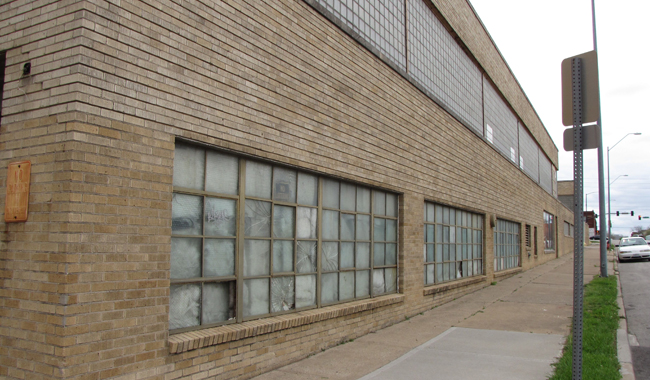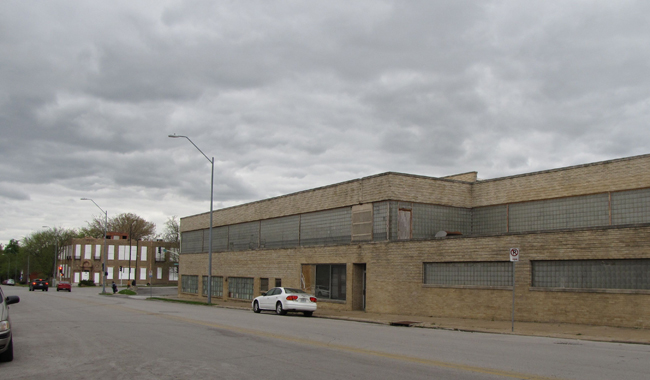
Many Midtowners drive past a building at 31st and Gillham without realizing it was once heralded as the “dairy of tomorrow.” The Aines Farm Dairy Building at 3110-30 Gillham is on the National Register of Historic Places. It was once where pasteurized milk, ice cream, butter, cottage cheese, and condensed milk were produced for Kansas Citians.

The story of the Aines Farm Dairy begins in Overland Park, where the Aines family started a dairy in 1912. The family’s two sons, Lewis and Carroll, started selling milk from a wagon.
As more and more people moved to “urban” Kansas City, they had more trouble getting their milk from traditional sources: their cows or farmers who delivered it. There was also a significant public health push to regulate milk production to reduce problems with bacteria and spoilage.
The production system changed to accommodate new regulations. As the National Register of Historic Places nomination form for the Aines Farm Dairy Building reports:
“The farmer delivered his milk to a shipping plant each morning. Trucks transported the raw milk products to the city to be processed and distributed. At the plant, the milk was pumped into holding tanks and pasteurized. After it cooled, it was bottled. Meanwhile, the tank trucks were scrubbed and sterilized. Milkmen loaded the bottled milk onto delivery trucks for distribution throughout the city. The milk plant was then cleaned and sterilized, in preparation for the next milk delivery. Cleanliness was so important that it took more time to wash and sterilize tanks, bottles, holding tanks, and other equipment than it did to actually transport and process the milk.”
The Aines company first built a production and distribution facility at 3834 Main Street. They moved in 1916 to a new facility at the corner of 31st and Gillham (which has since been demolished). In 1946, the Aines family sold the business, but the new owners of Aines Dairy built the 3110 Gillham facility, a modern new plant in the Streamlined Moderne architectural style, with all the latest bells and whistles.
“The new Aines Dairy plant was a state-of-the-art, 50,000 square-foot facility with the capacity to produce 100,000 gallons of milk and milk products daily,” the nomination form says. “A basement garage housed the dairy’s fleet of trucks. The first floor accommodated the plant’s production facilities on a single level. Special acid-resistant, no-slip floor tiles promoted work place safety. Cork insulated the walls of refrigerated areas. Stainless steel equipment and glazed ceramic wall tiles produced a clean, sterile environment. An electric pipe-washing machine cleaned the stainless steel pipes after each production run. Automated operations minimized the handling of milk and equipment and promoted sanitary conditions, while an on-site laboratory constantly monitored product quality. The retail sales room included a glass-walled area where visitors could observe the dairy operations.”
The Aines Farm Dairy operated until about 1957.
Thanks for the Aines Dairy article. Our family had Aines products delivered to our door when I was growing up……….I only remember motorized trucks. But I do remember Manor Bread being delivered in a horse-drawn wagon!!!
Loved the article about Aines Dairy as my father used to be an Aines deliveryman. I would love to be able to find some of those original milk bottles. The company used to throw a company picnic each year at Swope Park for all employees and their families. Always had a truck load of all the milk products and orange drink we could consume. It was a great time. And I also remember the Manor man coming around with the horse drawn wagon. We would feed the horses apples when we could.
Just a comment on horse drawn deliveries. I lived on Wayne street between Linwood and 33rd until about 1958. One my earliest and fondest memories is of the produce huckster who came around with a horse drawn wagon. I must have been about 4 or 5 years old probably 1953.
Pingback: Martini Corner Has Always Been a Neighborhood Business Center - Uncovering History Project